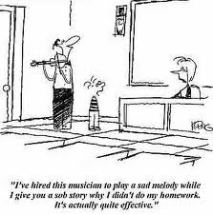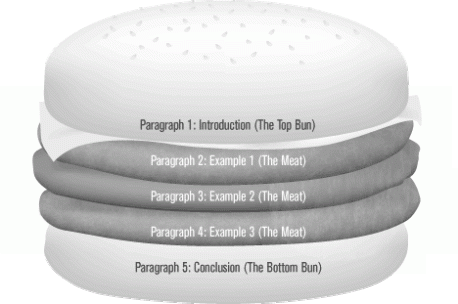I am just home after meeting with some very talented and knowledgeable 6th grade teachers. Our goal, to discuss the Common Core standards and get a feel for where they were in planning for their upcoming insurgence.
Part of the discussion was that in writing a persuasive piece of writing that the use of “I” is forbidden. I asked by whom it was forbidden and they both looked at me like, “everyone” knows this. And in walks the infamous “They” that makes these rules. Who is the “they” in this arena? And while you can find that in certain places the use of “I” is frowned upon it is not in others. What about the fact that some of the best persuasive pieces ever written have a very capital and strong sense of I!!
For instance, if you read through my blog entries, how would you classify (for lack of a better word) what kind of writing it is? What box would you put it in? Persuasive? Argument? Narrative? Informational? Fiction? Non-Fiction? Opinion? Or is it a brand new genre called blogging? Or are there strands of each and all of these?
Or is it just ranting from a girl who lives in the grey areas of life navigating through a world of black and white…forever bumping into the boundaries set by others; hard and fast rules that become the letter of the law lacking any theory to back it up.
I envision it as writing my own newspaper column each week. Where would that fit in?
I see it as a place where I gather my thoughts, opinions, and ideas and then attempt to support them with the thoughts and ideas and opinions of others. Sometimes they are simply ideas of my own that I attempt to connect to begin to make sense of what I am thinking about. I write for the surprise that Donald Murray always wrote about. Does this change what “kind” of writing I am writing on each and every attempt? Or does it even matter what “kind” of writing is if my readers are reading it and it is making them think and wonder and respond?
And why do we insist on creating “new” kinds of writing that only exist in the world of school? Have you ever seen or read a book report in the “real” world? What about the whopper of a 5-paragraph essay? When is the last time your boss came to you and said you need to write up a 5-paragraph essay, due on my desk by Monday? NO, you have not because the idea of 5 paragraphs is another myth created in the world of education in an attempt to dumb down the process of writing.
These teachers showed me a template for a persuasive (yes 5 paragraphs in this one too) where the students could essentially fill in the blanks and create a piece of writing that would fulfill the requirements of the Common Core Standards. I have to SHOUT out here that I really don’t believe these are the intentions behind the CCSS. This narrow thinking goes back to what Don Graves speaks about as teaching writing in terms of painting by number. All of the writing in these mythical genres look the same, feels the same, reads the same. BORING!!! BUT, as the teachers respond, if we do this then all of the standards will be met and we will be able to point out specifically in different colored pens which parts fulfill which standard. This leaves teachers in an impossible stance. They have to choose whether or not to do what they are told or to teach what they know is good writing. Wouldn’t you think they would be the same thing?
Our car is making a horrible noise. (Using a story/narrative strand here to make my point) There is a screeching sound that just makes your ears quiver when you turn the wheel. We need to take it to the mechanic to get it fixed. When it arrives he will listen to it, diagnose it and make the necessary changes. Imagine another world, say the world where school meets auto repair and instead of relying on the mechanic there is a checklist that says he must add some simile, a bit of metaphor as well as a heave dose of dialogue to fix and complete this engine repair. When done he can return it to us with all the things he can check off the list, but still with a broken car.
Taking the person OUT of the process only creates nonsensical ridiculous and completely absurd moves. There is NO sense in it and yet this is exactly the response I am seeing to the CCSS. It is about coverage and covering one’s ass, if I may be so blunt…but who cares if your ass is covered if you are turning out broken down cars and students? Taking the writer, the “I” out of the process is not going to create confident writers who know and understand when and where to use a writerly move if they have never had the opportunity as writers to make those decisions. (Using compare and contrast to drive my point home)
I do not start writing thinking; I will use metaphor, simile and dialogue in this piece. I start out with an idea and then as I write there are opportunities where these moves may or may not be useful to make my writing what I envision it to be. I may even remove my car metaphor before this piece is formally posted on my blog. The point it that these decisions are made my ME, the writer, so that I can create something that makes sense and that will engage my readers (hopefully) and allow them to think about something in a way that maybe they had not thought about it before.
My daughter sent me a link the other day about some middle schoolers involved in inquiry projects and created controlled experiment and then wrote it up and submitted it to various scientific journals to share their findings. Many of the journals, while they praised the work of the students and it’s originality were not open to accepting the work of these student because their report started with “Once upon a time”, in other words it did not follow the “rules” of the scientific genre.
And yet, you can see here on this link to TED that the work of these students was eventually published and is now one of the most read scientific reports on the Internet. http://www.ted.com/talks/beau_lotto_amy_o_toole_science_is_for_everyone_kids_included.html
And here is a link to the actual paper that was published. http://rsbl.royalsocietypublishing.org/content/early/2010/12/18/rsbl.2010.1056.full
So why are so many people reading this and watching this TED talk? I would argue (making this an argument piece now!) that they are reading it and listening to it because it is original and interesting and shows us what our kids CAN do if given the opportunity.
So what are we doing? In our efforts to do what is “right” we are forgetting to think about how kids learn, why kids learn and why they don’t. Why are kids so totally removed from their own educations, their own thinking, their processes of discovery and wonder and curiosity? Why? Why? Because that is exactly what we are asking of them. To fill in the blank, not to think about what they are writing, check it off the list and move onto the next genre. And the beat goes on…
Photo Credits: BLG Consulting Group, communicationissuccess.blogspot.com, http://unhmagazine.unh.edu, UNH Alumni, http://theclimatescepticsparty.blogspot.com/







In “When Harry Met Sally’, there is a famous scene. Meg Ryan is faking, but I am not when I say YES! YES! YES!. Donald Graves wrote somewhere an article/chapter/book (?) “Beware of Orthodoxies”. Another article from decades back is by Ed Shuster (I think that is his last name) called “Let’s Get Off the Mythmobile.” Both refer to what you are talking about here. Specifically about writing. We all need to re-read Brian Cambourne’s Conditions for Learning, too. I thought one of the good points about the CCS was that we could “do more with less” and create integrated units, but if the testing is going to be piecemeal…..maybe they should test the “idea” of various kinds of writings, but really look into it when the kids are say in gr. 6, 7 and 8. In other ways a ladder approach that is natural and not artificial. With the earlier grades being immersed in a few genres, along with the idea that a creatively written piece with voice and all the fine points on a rubric (thinking 6 Traits here) elevates the essay or piece even if the finer points are not obvious to certain scorers/readers. I remember arguing with colleagues while grading our state writing exams back in the 80s/90s. Oh my, some looked at the low end of the rubric and moved up. Others started with the top category and said, well, it has 3 out of four points and then moved down if needed. What was supposed to separate the strongest papers was “developed the topic in an interesting and imaginative way. Sometimes those types of papers were downgraded because they were not trite. Truly a boondoggle. (Linda Rief from New Hampshire conducted research years ago where she had people read 10 essays and rate the strongest and weakest. She found that everyone could agree on the weakest one, but the top paper was fairly evenly divided among 3 essays. Sort of stylistic issue which showed that it was more obvious which needed work compared to which was the most successful wriitng. It was eye-opening. Heard about it in a workshop presentation in the early 90s.) Interestingly I just found this on my FB page. http://www.9wsyr.com/news/local/story/Students-turn-persuasive-writing-assignment-into/lxQ4_CDeqUaT5B6W_Z5fFQ.cspx I think you will find this compelling. It is long but worth it. Not sure how they would score on their assessments for their persuasive letters, but they surely got the idea!!
I look forward to your posts Tomasen! I will try to find you on FB.
Until college, I was never allowed to write a piece with “I.” Wonder why I have trouble writing???
Your post makes me think of The New Yorker, and how in so many pieces the writers published therein make themselves present, and how that’s fresh and startling and makes the writing pop! When the writer says “I,” it makes the piece breathe.
I really needed to read this today. Our sixth grade team met this morning to talk about the persuasive and the CCSS, three of the five of us brought along the above sandwich graphic organizer…I just about screamed. In an effort to “help” students pass the test we take away their authentic voice…and then we ask ourselves why they don’t like to write!
I know…that organizer has made its way the world over!! And while I understand the need to simplify I don’t understand the need to have “one” way!! Those who understand writing realize it is a process and one that we are forever working on and that each writer’s process is different from any other. So glad I could write something that hit home for you.
Tomasen
I took a course in my Ed. D. program in the 80s at IUP in Pennsylvania. The prof of one of our research courses, Bob Millward, talked endlessly about good writing. Talked about boring versus lively. The 5 paragraph essay is a way for teachers to say, I can teach X, have the kids practice X and check to see if they can do X. Writing is not math. The problem is the general population does not often read essays much. If the newspaper is the model, that is not at a high enough level. Contrived writing done for worksheets, programs and tests is not good enough either. Don Graves used to say that there were no courses in Teacher Ed on writing. I don’t know if that has changed. If you are not a practitioner of the artform, how can you teach it or even know if you or your students have achieved it? 6 Traits tried to create rubrics to let teachers have a handle on what good writing looks like and to teach those aspects to kids. That is a start, but I am not sure it is enough. Also teachers disgree about what constitutes effective writing.
Kids who love to write, learn to write for a wider audience than the teacher, write often, fall in love with word and crafting…..those kids have a chance to grow as writers. We know there are lots of ways to help kids grow. And it takes time. Again I remember Don Graves’s piece Beware of Orthodoxies. Very true. Is the 5 paragraph essay in the CCSS? I don’t think it is, but maybe I am wrong.
why would i ever say no to a strategy that works in a piece of writing? people are funny. wanting to own the way things are done. maybe they just want to protect it, i don’t know. if i’m being honest, i don’t want to teach kids one primary way; i just don’t. because that means i’d have to do it myself. i’d rather write stories, poems, memoirs, personal essays, but i also don’t want to screw them for high school. i like atwell’s letter essay. i can keep it informal, start them with some structure, and then encourage them to veer. i encourage smart paragraphing, analysis, tying discussion and opinion to text, plot summary, and fun.
what was i talking about…?
You are talking about precisely what I was talking about…GOOD teaching!!
You crack me up!
Thanks for reading!
Thought you might like to read this blog post about testing in Conn. Thoughtful, thorough and gets at the point of the ridiculous parameters around testing. It will be interesting to see how this CAPT testing changes when they go to Smarter Balance in Conn.
I followed a link to your blog when you “liked” one of my posts at proswrite.com. I’m so glad I did! What people need to succeed in life is a RHETORICAL education.
Basically, that means the ability to use a set of text elements to achieve the writer’s purpose and achieve target reader interest and comprehension. The only way to produce such documents is to use a process for choosing text elements that incorporates planning, testing, and revising for an authentic purpose, which presumes a real audience who knows less than the writer about the content of the document. It seems like the Common Core “could” promote that.
I look forward to hearing more from you, Thomasen.
Thank you for reading and responding!! I agree that the standards could promote what you describe above. What worries me is the publishing companies that are lined up and in bed with the authors of the Common Core…ie, David Coleman and Pearson. The standards document alone is really nothing new..it is all of the high stakes testing to follow that I worry about.
Tomasen
Pingback: The Child’s Concept of Story by Applebee, Chapter 2 | Reading Collins
This is another post on my blog! And yes, these do have similar themes! Thanks for reading!
Tomasen
For me, the issue of good writing always comes back to (or should come back to) audience and purpose. To say that no piece of persuasive writing should have “I” in it is so dumb. However, there is a case to be made that in certain types of analytical writing, using the third person is a more appropriate way to reach your audience. That does NOT mean, of course, that you get rid of the person. The entire argument is based on your reading, your organization of the support for that argument. I teach different multi-paragraph formats and emphasize why it’s usually better for student-writers to leave out the first person in analytical writing (because mostly they’re saying “I think” and “I feel” when that is implicit–of course it’s what they think!). I also supplement the analytical with a lot of creative and personal writing, though, which is something teachers are not always given support for doing in their classrooms.
I like your blog. Most bloggers want only to express their thoughts and opinions. With English not their native tongue, they found it sometimes difficult. Thanks for liking my blog.
Victor,
Thanks!!
Tomasen
Thinking about what you said- that kids are being taught to “fill in the blank – not think about what they are writing”. That really resonated with me as being something to fight against strongly! It’s difficult sometimes to get adolescents to care enough about a piece of writing, that they are willing to actually think about what they want to say, and then try to make the words on the page express their thoughts and feelings. One thing that I have come to realize more and more lately is that reading thoughtfully, and responding personally in a way that does not involve writing answers to teacher-prepared questions, helps students to find their voice, to feel that their voice is valued, and later on, to use the ideas that emerged from their reading, reflecting, and sharing to write thoughtfully and with voice. Interestingly, our Ontario Reading curriculum expectations for K-8 specify those kinds of student engagement and interaction with the text. Nowhere does it say that students will answer questions about the text. I have found that when I model how to engage with and respond to what they are reading with the use of sticky notes or 2-column response charts, the students then have access to the “I” that you mentioned as missing from scripted, fill-in-the blank writing assignments. It becomes easier, then, for students to write a piece of persuasive writing about a topic that they have read and thought about, because the students have access to both the facts they recorded, and the personal thoughts, questions, and opinions they recorded while reading. can then be coaxed to emerge emerges from reading and post-reading discussion sessions. I have found the same approach to work powerfully for reading and writing other forms of text such as poetry, or science reports. I continue to struggle to bring out my students’ voices, while at the same time, helping them to learn and apply the other traits of writing. I am excited to have found this blogging community.
Lynn,
You make some great points here. So glad you have arrived here as well!! I agree it can be challenging working with adolescents, and so that is why choice and hearing what they think is so critical!
Thanks for reading and responding!
Tomasen
Great article and fun!
Thanks!!
Tomasen
Reblogged this on Elsesser's Education Blog and commented:
I like what this teacher has to say about using writing and the Common Core Standards.
Thanks for the link. Going there now!
Pingback: Learning by Doing: What We Discover When We Do the Tasks We Assign to Students | To Make a Prairie
Thanks for the Ping!!
YES! Fill in the blank and check off the standards. . . oy. WHY do we want the kids to write persuasive pieces in this way? Can’t we show them a number of different mentor texts of persuasive pieces and have them practice? Let’s just get them writing, then figure out what we need to work on.